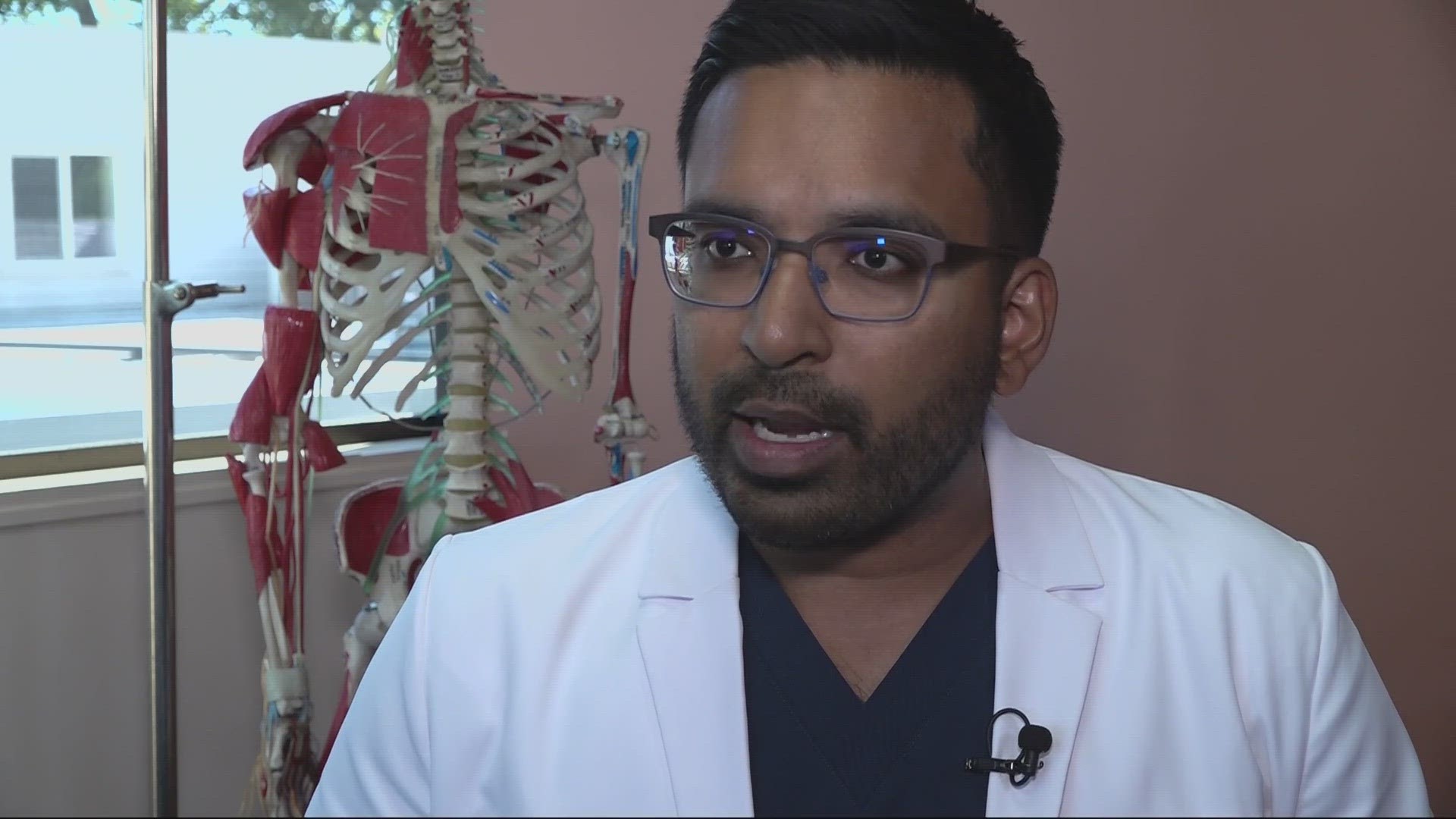PORTLAND, Oregon — Bunions impact one in every three Americans. It’s a foot problem that can be really painful and sometimes makes it hard to walk.
Traditionally, surgery would keep patients from putting any weight on their foot for weeks, but a newer minimally invasive way to correct bunions has patients walking out the same day as surgery.
“It’s been a complete game changer and I think it’s here to stay,” said Dr. Akash Gupta.
Dr. Gupta is an orthopedic surgeon with Eastside Orthopedics and Medicine. He said a lot of people think of a bunion as a painful bony bump on the side of their big toe.
“What it really means is that your toe points outwards, but it creates this bump on the side of your foot and it’s actually a deformity of the bones not being in correct alignment,” he said.
Seventy percent of people who develop bunions have a family history, suggesting a genetic connection. Bunions are also seen more often in women, compared to men, but that, Dr. Gupta says, has to do with footwear.
“Women’s shoes have historically been designed to come to a point much quicker than men’s shoes,” Dr. Gupta said. “And so, we just see it much more frequently with the use of tighter fitting shoes; high heels.”
Age is also a factor as well. Over time as people age the ligaments in their feet start to relax and then that deformity becomes even worse and more painful, according to Dr. Gupta.
So, yes, it is considered hereditary, but the pain and size are a cumulative effect of both ill-fitting footwear and those age-related changes that happen to our feet.
“You can live with a bunion your whole life and not realize it’s there, that would be great,” Dr. Gupta said. “But often over time as people age, they start to notice it becoming more prominent, more painful, and then causing more dysfunction in their daily lives.”
That’s when it may be time to consider surgery.
Dr. Gupta started doing minimally invasive surgery to treat bunions four years ago and now uses it to fix 90-95% of his patients.
“Which is just such a big difference for patients’ lives and recovery; to be able to go through this and get back on their feet and back to activities a lot quicker, with a lot less stiffness, and a lot less pain.”
Recovery from traditional bunion correction surgery could take four to six months. The minimally invasive option can have patients walking in normal sneakers again in as little as six weeks, according to Dr. Gupta. With a special boot, they're on their feet the same day as surgery.
“The minimally invasive technique is essentially the same principles of an open procedure where you’re still cutting and shifting the alignments to the foot, but instead of doing this with a big incision where you have to strip away all the soft tissue to cut the bone, we’re actually doing this now with incisions that are two to three millimeters long,” Dr. Gupta said.
Short of surgery There are things you can do to make that bunion a bit more comfortable. The first thing on the list is good shoes.
“The primary thing is wearing good shoes. Shoes that have a wider toe box or a rounded toe box, giving the foot enough space, meaning it doesn’t rub, it doesn’t pinch, it doesn’t cause pain,” Dr. Gupta said.
So, when should you consider surgery? Dr. Gupta said pain should be your number one factor.
“It’s really not for looks, it’s really about pain,” he said.
Next, be mindful of the potential for a hammer toe.
“Pain is the number one reason to have your bunion addressed surgically, but the second would be if you’re starting to develop a hammer toe or pain on the ball of your foot, underneath the second toe as another reason to consider having it looked at,” Dr. Gupta said.
Bunion or not, Dr. Gupta said foot health is part of your everyday health and you don’t want to take that for granted.
“Be really mindful of the shoes you wear on a daily basis and wear shoes that are comfortable, have a lot of support, have the right width as a way of maximizing your quality of life,” Dr. Gupta said.
VIDEO PLAYLIST: Healthier Together

